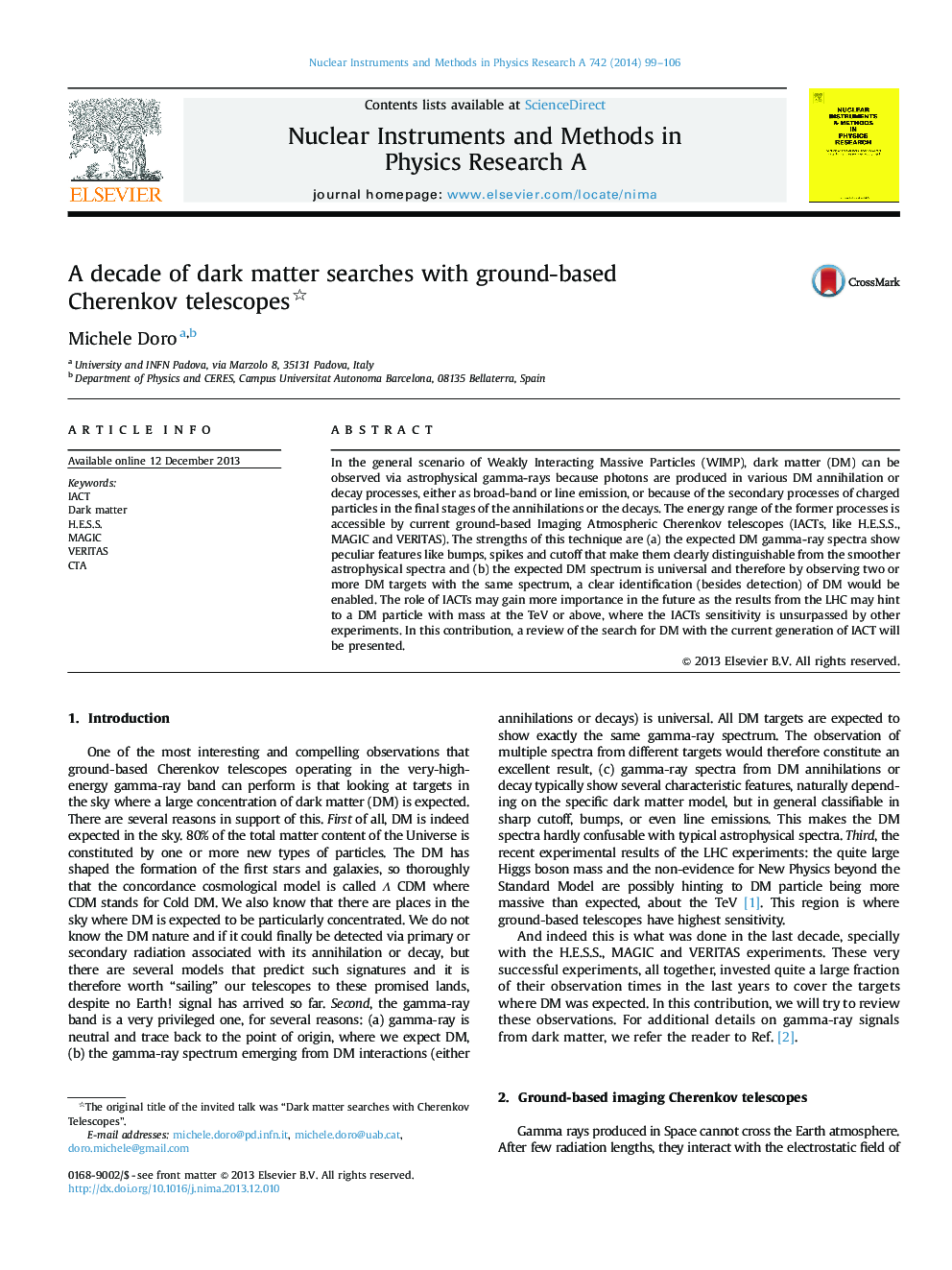| Article ID | Journal | Published Year | Pages | File Type |
|---|---|---|---|---|
| 8176916 | Nuclear Instruments and Methods in Physics Research Section A: Accelerators, Spectrometers, Detectors and Associated Equipment | 2014 | 8 Pages |
Abstract
In the general scenario of Weakly Interacting Massive Particles (WIMP), dark matter (DM) can be observed via astrophysical gamma-rays because photons are produced in various DM annihilation or decay processes, either as broad-band or line emission, or because of the secondary processes of charged particles in the final stages of the annihilations or the decays. The energy range of the former processes is accessible by current ground-based Imaging Atmospheric Cherenkov telescopes (IACTs, like H.E.S.S., MAGIC and VERITAS). The strengths of this technique are (a) the expected DM gamma-ray spectra show peculiar features like bumps, spikes and cutoff that make them clearly distinguishable from the smoother astrophysical spectra and (b) the expected DM spectrum is universal and therefore by observing two or more DM targets with the same spectrum, a clear identification (besides detection) of DM would be enabled. The role of IACTs may gain more importance in the future as the results from the LHC may hint to a DM particle with mass at the TeV or above, where the IACTs sensitivity is unsurpassed by other experiments. In this contribution, a review of the search for DM with the current generation of IACT will be presented.
Related Topics
Physical Sciences and Engineering
Physics and Astronomy
Instrumentation
Authors
Michele Doro,
